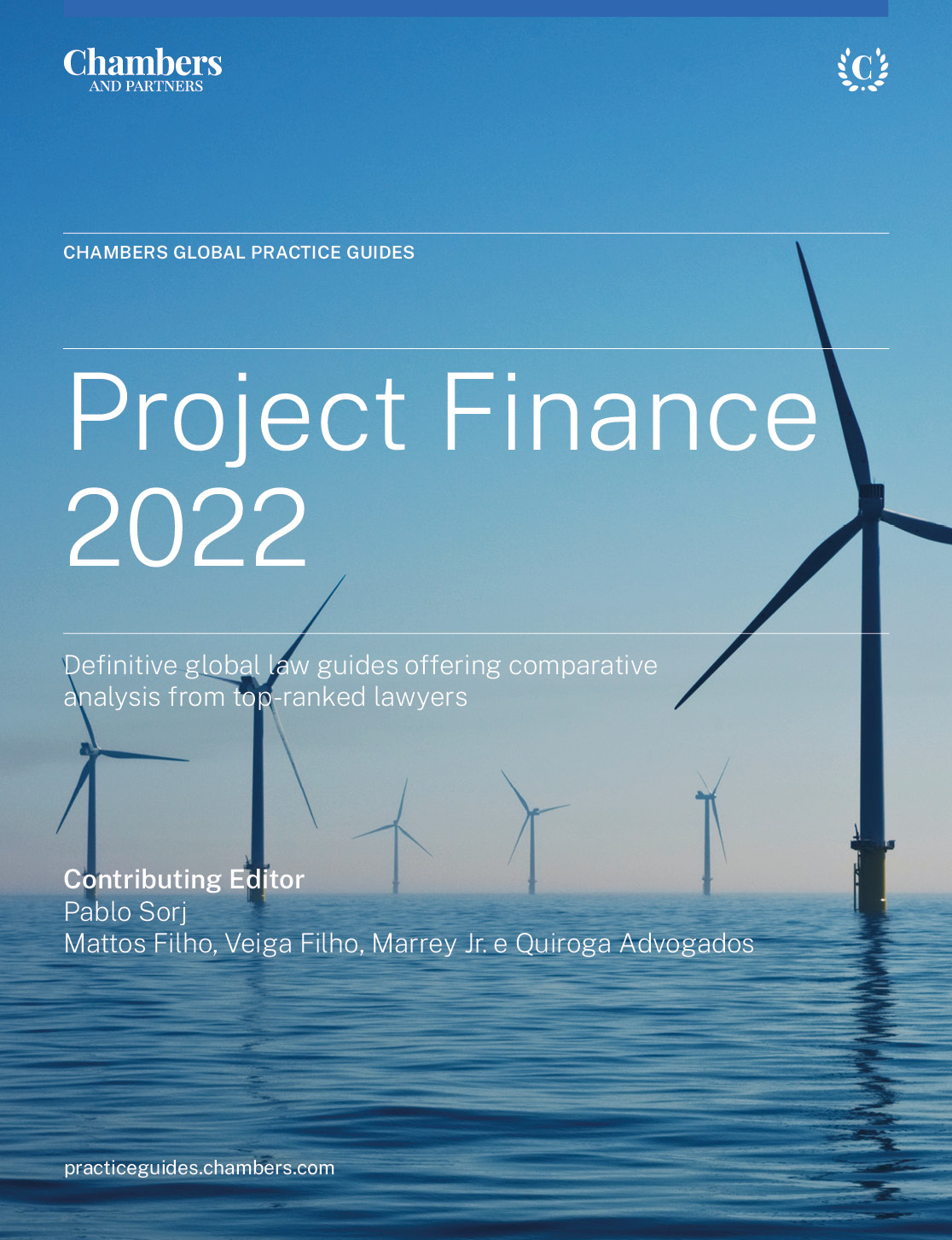
Project Finance 2022
The new Project Finance 2022 guide features 15 jurisdictions. The guide provides the latest legal information on public-private partnership (PPP) transactions, guarantees and security, judgments of foreign courts, foreign investment, structuring and documentation considerations, bankruptcy and insolvency, insurance, tax, and project and financing agreements.
Last Updated: November 03, 2022
Compare law and practice by selecting locations and topic(s)
Select Locations

Select Topic(s)

Please select at least one location and one topic to use the compare functionality.
Project Finance Developments
In recent years, the number of participants in global project finance markets has increased notably, as a wider range of lenders and sponsors, located in various parts of the world, have become active players.
The capacity to fund large-scale projects and historical experience in cross-border transactions have led commercial banks to act as a traditional source of financing. However, the financial crisis and the changes in the financial regulatory framework, such as the Basel III standards, have limited the availability of credit and have brought multi-sourced financing for commercial banks into the main structure, filling the funding gap worldwide.
This means that large-scale projects are now financed using more sophisticated and complex financial and legal instruments, provided by a diverse set of public and private institutions. In recent years, the diversity of market participants has risen, including capital markets investors, export credit agencies (ECAs), multilateral development finance institutions and government lending institutions.
Notwithstanding this increased complexity, a combination of local market expertise, sound commercial structures (and relationships), due diligence and robust security packages has helped to ensure that the new structures are used effectively.
Moreover, global economic growth and the consequent increased demand for energy have become a major driver for capital investment; this is especially the case in fast-growing countries. In emerging markets, despite the political uncertainty (especially with COVID-19) and tighter fiscal policies, the flows from developed financial markets have driven the search for yields.
Required Investments and Results
The need for remarkable projects and innovative deals worldwide over recent years has dominated the headlines. For example, the Asian Development Bank estimated that investment in infrastructure in Asia must add up to approximately USD1.7 trillion per year by 2030 in order to maintain growth momentum, tackle poverty and respond to the issue of climate change. See www.worldfinance.com.
In 2017, the McKinsey Global Institute released a report assessing the worldwide demand for increased infrastructure investment. This report estimated that, from 2017 to 2035, the world must invest USD3.7 trillion a year in economic infrastructure (such as transportation, power, water and telecoms systems) in order to support rates of growth. The report further estimates that emerging economies will demand approximately 63% of that amount.
However, despite high demand for a greater number of projects, the market continues to be adversely affected by the instability of commodity prices and the difficulties arising from global political events.
As a result, according to data from Refinitiv, global project finance loans in 2021 totalled USD305.9 billion from 918 deals, an increase of 7% compared to 2020, that amounted to USD285 billion from 919 deals. The power sector remained the most active throughout 2021, with financing totalling USD129.3 billion via 616 deals, with a slight decrease of 2% compared with 2020 and the renewables representing 68% of the sector.
America's project finance loans in 2021 reached USD95.9 billion from 377 deals, up 4% from 2020. The power sector accounted for 53% of that market, closing for a total amount of USD51 billion.
EMEA (Europe, the Middle East and Africa) project finance loans totalled USD148.1 billion in 2021, representing an increase of 15% compared to 2020 and marking the second highest annual volume ever on record.
Asia Pacific and Japan project finance loans in 2021 amounted to USD61.8 billion, which was down 4% compared to 2020 figures.
The green bond financing market has also been encouraged over recent years and has an increased presence in the international market. In 2021, climate-aligned issuance rose to USD522.7 billion, which was an increase of 75% on the final 2020 figure of USD298.1 billion. In addition, the number of countries from which the loans originated rose from 22 to 46, indicating a more global presence of this type of instrument. See www.climatebonds.net.
Conclusion
Although it is difficult to predict how the markets will react, particularly given concerns about political events and the continuing impact of COVID-19 on the global economy, the demand for infrastructure projects is as high as ever, and the growth of major project financing is likely to continue.
It is clear that structuring project finance that includes multiple funding sources is becoming more complex every year. It is therefore key for market participants (including lawyers) to be fully familiar with market trends and a diverse pool of businesses and risks associated with the projects.
Despite all recent results and developments, project finance has frequently proved to be a resilient way to fund infrastructure projects. Therefore, it remains one of the main sources of funds worldwide and there is no reason to believe that this will cease to be the case in the near future.

